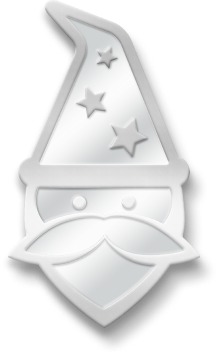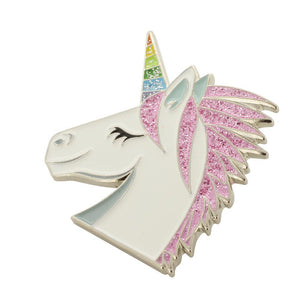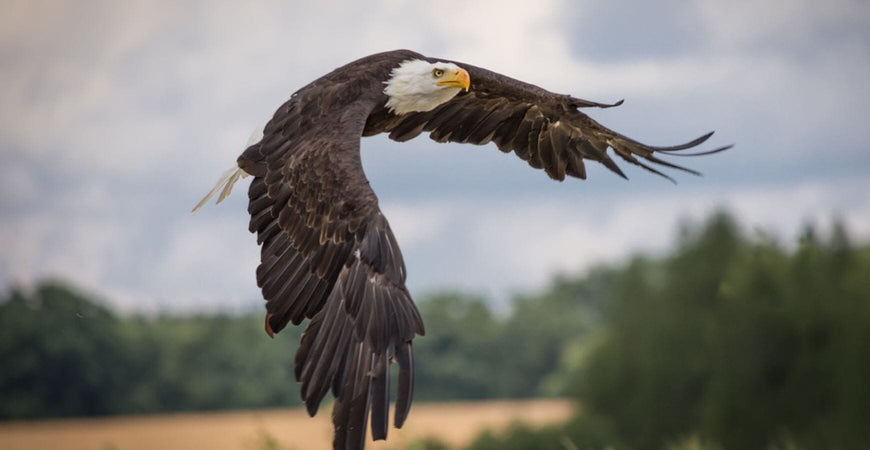The bald eagle, also known as Haliaeetus leucocephalus, lives in North America and is classified as a bird of prey. It can be found in Alaska, Canada, the continental United States, and the northern part of Mexico. Usually, bald eagles are found near open water because they mostly eat fish, which they catch by flying over the water before swooping down to snatch their prey. The bald eagle is America's national bird and appears on the official United States seal. Although this bird was once considered an endangered species, its population has since rebounded.
- American Bald Eagle Information
- Seven Interesting Bald Eagle Facts
- Learn About the Bald Eagle
- Bald Eagle Species Profile
- Bald Eagle Facts and Information
- All About the Bald Eagle
- Bald Eagle Fact Sheet
Where Do Bald Eagles Live?
The bald eagle is the only sea eagle native to North America. Bald eagles live near bodies of water ranging from Louisiana bayous to the coast of British Columbia. Birds that live in the north migrate yearly, while southern eagles remain in their territory year-round. When the population of bald eagles fell during the 1950s, the birds were mostly only found in Alaska, the northern and eastern provinces of Canada, and the Aleutian Islands. Since the population has rebounded, bald eagles are now found in every state of the United States except for Hawaii and all Canadian provinces.
- Around 2,000 bald eagles spend every winter in Squamish, British Columbia.
- Bald eagles typically live around bodies of water so they can easily hunt fish, including salmon.
- Twice, bald eagles have been found in Ireland. It's unclear why they wandered so far from home.
What Do They Look Like? Put That Majestic Mug on a Hard Enamel Pin
Bald eagles are beautiful, majestic creatures, perfect for placement on a new custom enamel pin. Although they are called bald eagles, these birds are not actually bald. They are called bald eagles because the word "bald" derives from "piebald," which used to mean "white-headed." All bald eagles have white heads, while their bodies, wings, and tails are brown. Males and females look the same, but females are usually around 25% bigger than male birds. Young eagles are mostly brown on their heads and their bodies.
- The bills and legs of bald eagles are bright yellow.
- Young birds usually achieve the plumage of adult birds around age five.
- Bald eagles have distinctive beaks that are large, hooked, and yellow.
Bald Eagle Behavior: Building Those Characteristics into Custom Pins and Promotional Items
Many of the characteristics of the bald eagle are ones that many people want in themselves. Strength and power, grace and loyalty, are just a few of the characteristics of the bald eagle. When you are picking a symbol to be included in your custom pin creation, consider these qualities and include the bald eagle in your enamel pin design.
The bald eagle is a powerful flier. Its rapid dive speed also makes it a formidable hunter. Bald eagles are also very nimble fliers, which makes it harder to hunt them. Eagles who live near bodies of water that freeze during the winter migrate south to find running water, but if the water doesn't freeze in their home territory, they live there year-round. Migrating birds typically travel during the day.
- Bald eagles reach speeds of 35 to 43 miles per hour when flying.
- Due to their maneuverability, they can chase geese in the air, fly underneath, turn, and twist their talons into a goose's breast while still airborne.
- They are not as fast at flying as golden eagles.
- Bald Eagle Stages of Development
- Bald Eagle: Noble Bird or Stealing Scavenger?
- Bald Eagle Facts: How They Hunt
- Eagles' Diet and Feeding
- Eagle Life Cycle: Pin Feathers to Predators
Conservation Status – Spread Awareness Through Keychains and Other Personal Items
Bald eagles are no longer considered an endangered species. However, both bald and golden eagles are still protected under several different federal laws as well as a variety of local and state laws. If wildlife conservation is something that is important to you, consider showing that value by adding a bald eagle custom keychain to your keyring. Custom keychains can be subtle reminders of what is important to you and encourage you to share them with others.
- It is illegal to disturb any bald eagle nests, including those that are no longer active.
- There are certain types of permits available for those who want to take or relocate golden and bald eagles.
- The Eagle Act provides many protections for eagles and restricts how humans may interact with the birds.
- Fact Sheet: Natural History, Ecology, and Recovery
- Breeding Bald Eagles in Captivity
- Species Assessment for the Bald Eagle
- Bald Eagle Characteristics and Status
- Why Bald Eagles Are No Longer Endangered
- A Hard Life No More: Bald Eagle Populations Soaring
- Endangered Species Success Story: American Bald Eagle Population in Lower 48 States Exceeds 300,000
Learn About Bald Eagles and Other Eagle Species: Featured on U.S. Coins and More
The bald eagle appears on several pieces of U.S. currency. If you are making custom coins online, it is a highly recognized patriotic symbol that evokes strong emotions in many Americans. Collecting custom coins with Eagles on them is also a fun hobby for people of all ages.










































